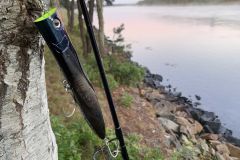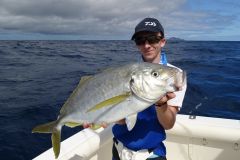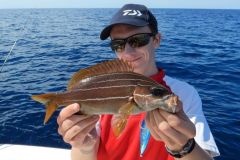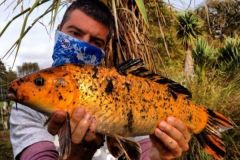The barracuda, or sea pike
The barracuda sphyraena barracuda is a super predator from the Sphyraenidae family that lives in warm seas. It has adapted to a wide range of environments, and is found in virtually all the world's tropical and subtropical seas and oceans, with the exception of the eastern Pacific.
Its morphology is very similar to that of our freshwater pike, with an elongated body and a wide, powerful caudal fin that enables it to pounce on its prey. It has a very large head with a wide mouth paved with large, sharp, fang-like teeth, enabling it to attack all types of prey. It can measure up to 2 meters long and weigh around 50 kg.
It feeds mainly on fish, which it attacks by lying in wait, like our common pike. It can accelerate very quickly (up to 60 km/h), but only over a short distance.
It is particularly fond of garfish, but will adapt to the prey it encounters. It may set its sights on bonefish, which are sometimes found in large schools, but can also attack larger fish such as a small blacktip or lemon shark.
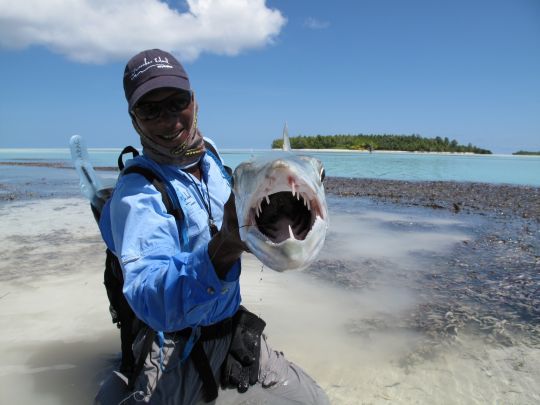
Barracuda fishing
They are solitary fish that roam in search of food, but are often stationary, camouflaged on the bottom or near structures to hide from their prey before swooping in. Their attacks are violent and swift. They can seize a fish or tear off a piece with a snap of their mouth. It's not uncommon to witness this kind of scene, when you catch a bonefish and a barracuda pops up to cut it in two!
In the Caribbean, they often feed on needlefish, which are abundant in areas close to mangroves. These small, slender, elongated green/blue fish are regularly attacked and have to leap out of the water to escape their predators.
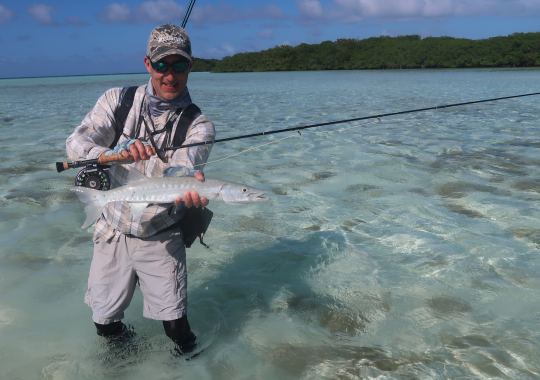
The equipment
The tackle you use will depend on the size of the fish you're after. When you come across small barracudas, it's sometimes possible to catch them without steel leaders using bonefish flies. But very often, you'll get cut off at the touch if the fish engages. An 8-power rod will bring out these modest-sized fish, with juveniles reaching 60 cm or more.
For larger specimens, you'll need more powerful equipment. A 9-foot rod with a power of 10 or more will enable you to fight a large barracuda. Because of its teeth and powerful jaw, the angler specifically looking for barracuda will use a steel leader mounted on a 40 to 60-pound fluorocarbon leader.
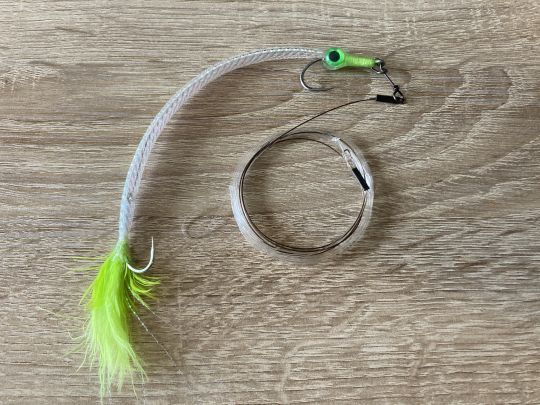
In action
Fishing is mainly by sight on the slightly deeper flats, or just at the edge of the deeper areas.
It's never easy to trigger the bite of a barracuda which seems to have limited periods of activity. It's not uncommon to see a fish and present it with different flies without the slightest reaction.
The fly's swimming speed also seems to be one of the decisive parameters. Attacks and hits are far more numerous when trolling or spinning! In fact, the most common technique is to reel in a blue/green plastic tube as fast as possible!
When fly-fishing, it's best to reel in your line as quickly as possible, using fast, continuous strips, or by locking your rod under your armpit and reeling in with both hands, the "rolly polly" technique.
On touch, the fish will often hook itself, but a hook offset to the rear avoids missing short bites.
This is followed by a long, powerful rush, often followed by one or more vertical jumps. Once these moments have passed, the barracuda quickly tires. You still have to be careful with a new start, which can lead to breakage.
Be careful when untying your fly, as the barracuda's teeth are dangerous to our fingers and hands. Long-nosed pliers are recommended for unhooking flies.
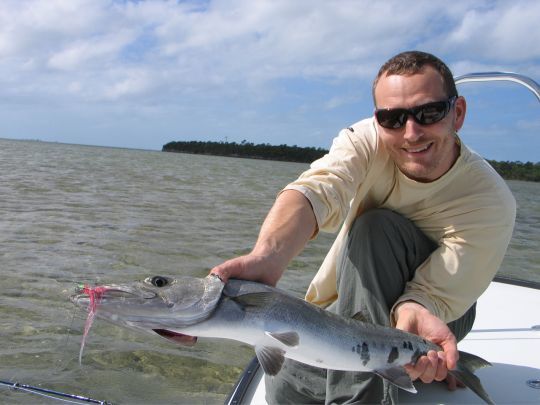
Where to go barracuda fishing?
Barracudas can be found in virtually every destination in the Caribbean, the Seychelles and the Indian Ocean, as well as in Africa.
It is rare to plan a trip with the aim of catching this species, which comes as a "secondary" catch. Nevertheless, they are beautiful fish to catch on the fly and give good sensations when they reach a metre or more.
Smaller specimens are of little interest, as they don't put up much of a fight.

 /
/ 

